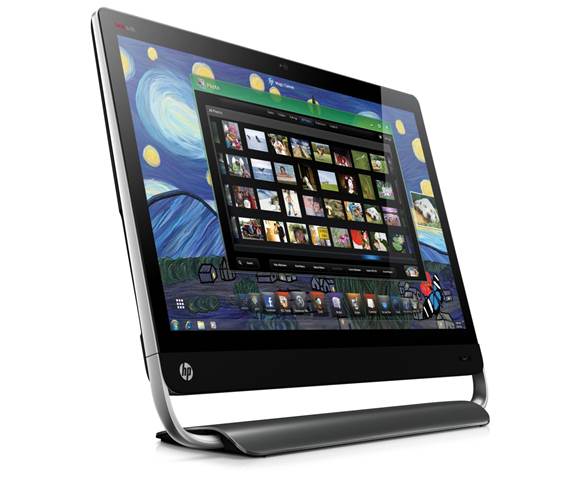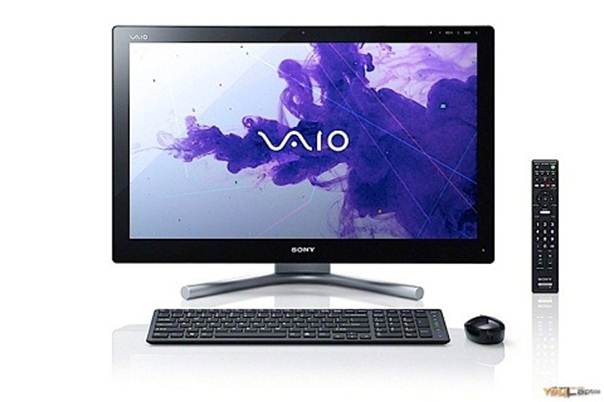
Has hp lost its touch?
WE USED TO get excited when HP would send
us its latest all-in-one. Each new model seemed to add some cool innovation or
new feature that no other manufacturer had. The Omni 27-1015t has us wondering
if the all-in-one pioneer has grown tired of pushing the envelope.
Sure, this new model has a slightly faster
CPU, a better GPU, a bigger hard drive, and faster memory than the last HP
all-in-one we tested (HP's Omni 27 Quad, reviewed in July), but simply reaching
into a new parts bin isn't innovating. Visit HP's website, and you'll see the
Omni 27-1015t selling for $1,250. You can customize the machine you buy,
however, and the computer that HP sent for review was pumped up with a faster
CPU (an Intel Core i5-3550S), more memory (8GB of DDR3/1600), a faster video
card (an AMD
Radeon HD 7650A), and a higher-capacity
hard drive.
This bumped the price tag to $1,470, which
puts it just $30 below the price tag of the Core i7-3770S-powered Asus ET2701.
In addition to a superior CPU, Asus puts a Blu-ray drive in its machine,
whereas HP cheaps out with a simple DVD burner. Both machines include an
LED-backlit IPS LCD panel (neither are touchscreens).

HP
needs to move the power button off the top of its all-in-one PCs; it's too easy
to accidentally turn the machine off while adjusting the angle of the display
In terms of benchmark performance, the Omni
27-1015t proved to be considerably faster than the relatively weak Gateway and
roughly on par with the Sony L Series, but it trailed the Asus and Dell
machines by considerable margins.
In most other respects, the Omni 27-1015t
is a carbon copy of the Omni 27 Quad. On the machine's left-hand side, you'll
find two USB 3.0 ports, a mic input, a headphone output, and a media card
reader. There's a slot-feed DVD player/burner on the right-hand side (with an
eject button), along with buttons for volume control and for switching between
PC and HDMI modes.
The HDMI input is also located on the
right-hand side, but HP would be wise to follow the rest of the industry in
moving this port to the back of the machine so the cable can be hidden. And for
the love of Pete, when your engineers design the next model, force them to
provide an easier means of controlling the volume when the machine is in HDMI
mode. As we noted in our review of the Omni Quad, it takes 14 button presses to
bring the volume from 100 percent to zero.
The Omni 27-1015t’s back panel hosts four
USB 2.0 ports, line-level RCA outputs for powered speakers, and a subwoofer
output. HP sells a pretty good powered subwoofer—the $130 HP Pulse—but you can
plug any powered sub into this jack.
If you don't need an all-in-one as powerful
as what Asus is offering, we recommend stepping down to the Gateway. The price/
performance ratio of HP's Omni 27-1015t is just too out of whack for us to
recommend it as an in-between compromise.
We dig HDMI inputs on all-in-one computers,
but the port should be back here with the rest of the I/O ports.
|
Specifications
|
|
CPU
|
3.06Hz Intel Core i5-3550S
|
|
GPU
|
AMD Radeon HD6550A
|
|
RAM
|
8GB DDR3/1600
|
|
Optical
|
2TB (7,200rpm)
|
|
Display
|
DVD player/burner
|
Sony Vaio L Series (Model SVL24116FXB)

Oh me-oh, oh my-oh, look at the price of
this vaio!
SONY INTRODUCES a number of cool
innovations with its latest generation of Vaio L Series all-in-ones, but the
company exacts a hefty premium from those who want the best the company has to
offer. This model SVL24116FXB costs $200 more than the Asus, but is outfitted
with a slower CPU, a smaller display, a lesser video card, and a smaller hard
drive.
Sony's most important innovation is its
capacitive touchscreen that recognizes not just two, but 10 touch points. As
such, this will be one of the few current-generation computers that will meet
the Windows 8 requirement for touchscreens to recognize a minimum of five touch
points. What’s more, the computer can use its built-in webcam to respond to
physical gestures even without the touchscreen.
While listening to music, for instance, you
can adjust the volume by pointing your index fingerat the computer's camera and
drawing a circle in the air: A clockwise spin turns the volume up, and a
counterclockwise movement turns it down. If you’re watching a slide show,
waving your hand from left to right advances to the next photo, while moving it
from right to left moves back to the previous slide. It's a bit of a gimmick
now, but we predict it's a feature we'll come to expect over time.
Other unique features we’d like to see
every all-in-one manufacturer copy include a picture-in-picture mode that lets
you use the full Windows 7 desktop while video from the HDMI input streams to a
small window in a corner. This allows you to watch TV and use the web at the
same time. There’s also a picture-and-picture mode that splits the screen
vertically and places a window for the HDMI input alongside a Windows 7 window.
These features would be even better if you could swap either to full-screen
mode without losing sound from the HDMI input (so you could focus on the web
during commercial breaks and switch back to the windowed view when they’re
finished).

Sony
declined to say if its 24-inch touchscreen panel is based on TN or IPS
technology, but we can tell you it isn't nearly as bright and vibrant as either
the Asus or the Dell.
Unlike the Asus, the Sony has an integrated
TV tuner, and you don’t need to fire up the PC to use it, to use the display
with an HDMI source, or even to use a web browser. There's a Core i7 CPU under
the hood, but it's a Core i7-3610QM that doesn't include Intel's more advanced
virtualization technologies (vPro and VT-d) or Intel’s demand-based switching
technology. The Vaio’s Nvidia GeForce GT 620M video card is also a step behind
what Asus, Dell, and HP have to offer.
Sony’s Vaio L Series model SVL24116FXB
brings some impressive innovations to the all-in-one market, but we don't think
they’re worth a $200 premium over the much more powerful Asus ET2701 with its
larger, better-looking display.
Sony is one of the few all-in-one
manufacturers still providing a TV tuner by default. The Vaio L Series also
provides both an HDMI input and an output.
|
Specifications
|
|
CPU
|
2.3GHz Core i7-3610QM
|
|
GPU
|
Nvidia GeForce GT 620M
|
|
RAM
|
8GB DDR3/1600
|
|
Optical
|
1TB (5,400rpm)
|
|
Display
|
Blu-ray player/DVD burner
|
Can any of the latest
all-in-one machines lure us away from a conventional desktop?
THE ALL-IN-ONE MARKET has grown and changed
for the better this year, thanks in large measure to efforts by Asus and Dell
to push the envelope. Sony also deserves a measure of credit for introducing
pic- ture-in-picture, picture-and-picture, and gesture-recognition innovations
(even if its Vaio L Series trails the pack in terms of price/performance
ratio). But can any of these contestants tempt a hard-bitten PC enthusiast into
giving up separate boxes?
Dell comes close with its new XPS One,
especially the configuration reviewed here. We can't overstate the beauty of
that gorgeous Samsung PLS panel. The display might not satisfy a professional
photographer or illustrator, but games, movies, and websites look fantastic,
and it delivers higher resolution than most of us are using today (this review
was written using a Dell U2410,with native resolution of 1920x1200). Plus, it’s
the only machine in the roundup to include an SSD, albeit a small one.
The Asus ET2701, on the other hand, delivers
the best bang for the buck. Yes, its IPS panel has native resolution of only
1920x1080, but it costs a full $500 less than the Dell, and the rest of its
most critical infrastructure—CPU. GPU, memory, and mechanical hard drive—is
exactly the same. (But if you decide to buy one, don't bother unpacking the
keyboard—it well and truly sucks.) If you—or your friends and family, if
they're looking for your recommendation— have the budget, this is the machine
to buy.
But not everyone has that much cash to
throw down for a new PC, so what do we recommend for smaller budgets? Certainly
not the HP Omni 27—it’s nearly as expensive as the Asus, but it’s not nearly as
good a value. The same goes for the Sony Vaio L Series, although we applaud the
company for introducing new features into the market. That leaves Gateway’s
little engine that could. The ZX6971-UR10P is nothing to brag about, but for
those who need a simple productivity machine that can double as a display for a
set-top box or a gaming console, it’s the machine we’d recommend.